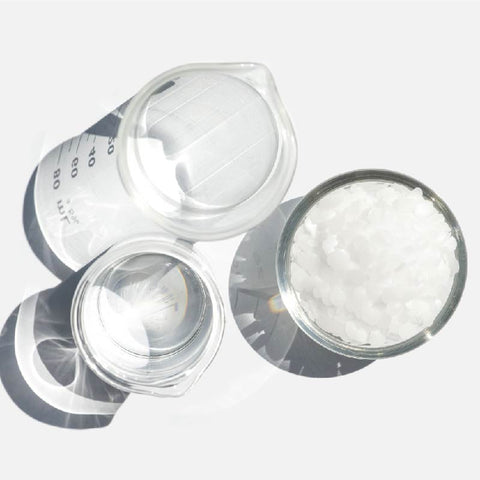
Exfoliators remove dead skin cells, revealing smoother and brighter skin.
Also known as Alpha Hydroxy Acid (AHA), and synthesized in the lab. It boasts several benefits, including exfoliating dead skin cells, enhancing skin texture, and promoting a smoother, brighter complexion. The working mechanism involves penetrating the skin to dissolve the bonds between dead skin cells, unveiling new skin underneath. While generally safe for topical use, it may cause skin sensitivity and sun sensitivity.
Andersen, F. A. (1998). Final Report On the Safety Assessment of Glycolic Acid, Ammonium, Calcium, Potassium, and Sodium Glycolates, Methyl, Ethyl, Propyl, and Butyl Glycolates, and Lactic Acid, Ammonium, Calcium, Potassium, Sodium, and Tea-Lactates, Methyl, Ethyl, Isopropyl, and Butyl Lactates, and Lauryl, Myristyl, and Cetyl Lactates. International Journal of Toxicology, 17(1_suppl), 1–241. https://doi.org/10.1177/109158189801700101
Also known as Beta Hydroxy Acid (BHA) and synthesized in the lab. It comes with several advantages, including unclogging pores, reducing acne and blackheads, and enhancing skin texture. The working mechanism involves penetrating pores to dissolve oil and debris, thereby exfoliating dead skin cells and preventing clogged pores. While generally safe for topical use, it may cause dryness and irritation, especially for sensitive skin.
Safety Assessment of Salicylic Acid, Butyloctyl Salicylate, Calcium Salicylate, C12–15 Alkyl Salicylate, Capryloyl Salicylic Acid, Hexyldodecyl Salicylate, Isocetyl Salicylate, Isodecyl Salicylate, Magnesium Salicylate, MEA-Salicylate, Ethylhexyl Salicylate, Potassium Salicylate, Methyl Salicylate, Myristyl Salicylate, Sodium Salicylate, TEA-Salicylate, and Tridecyl Salicylate. (2003). International Journal of Toxicology, 22(3_suppl), 1–108. https://doi.org/10.1177/1091581803022s303
A dicarboxylic acid with versatile applications in skincare and cosmetics. It can be derived from castor oil or synthesized in the lab. The key benefits of this ingredient include sebum-regulating properties, acting as a pH adjuster, and its potential as a film-forming agent. Its functionality lies in balancing sebum production, maintaining the desired pH of skincare products, and contributing to the formulation's texture and stability. Sebacic Acid is generally considered safe for topical use.
Fiume MM, eldreth Hb, Bergfeld WF, et al. Final Report of the Cosmetic Ingredient Review Expert Panel on the Safety Assessment of Dicarboxylic Acids, Salts, and Esters. International Journal of Toxicology. 2012;31(4_suppl):5S-76S. doi:10.1177/1091581812447203
A fatty acid with antibacterial and sebum-regulating properties. It is synthesized in the lab. The benefits of this ingredient include controlling excess sebum production, targeting acne-causing bacteria, and promoting clearer skin. Its working mechanism involves regulating sebum production and inhibiting bacterial growth. Generally, it is considered safe for topical use.
Noda N, Umebayashi K, Nakatani T, Miyahara K, Ishiyama K. Isolation and characterization of some hydroxy fatty and phosphoric acid esters of 10-hydroxy-2-decenoic acid from the royal jelly of honeybees (Apis mellifera). Lipids. 2005 Aug;40(8):833-8. doi: 10.1007/s11745-005-1445-6. PMID: 16296402.
